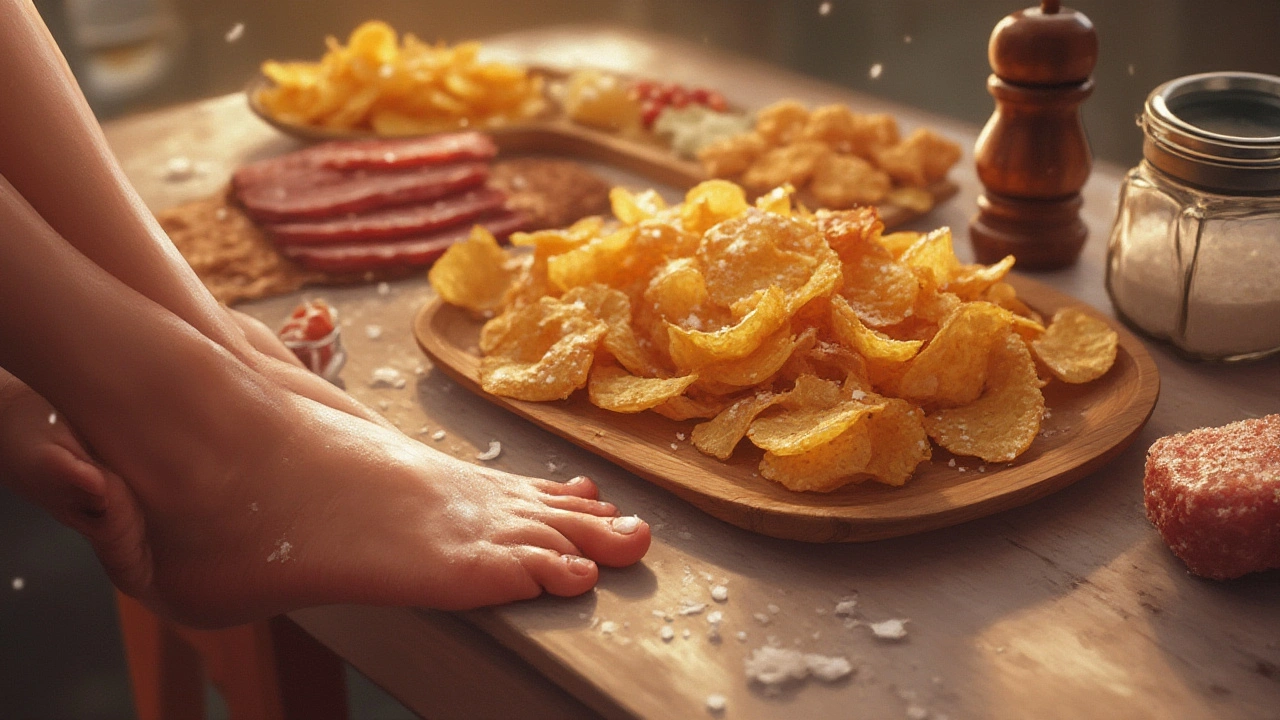Sodium and Heart Health: What You Need to Know
Ever wonder why doctors keep nagging about “cutting back on salt”? The short answer is that too much sodium makes your blood pressure spike, and that puts extra strain on your heart. When the pressure stays high, arteries get stiff, the heart works harder, and over time you risk heart disease or failure. Below we’ll break down how sodium does this and give you real‑world tips to trim it without turning every meal into a bland mess.
Why Sodium Raises Blood Pressure
Salt is made of sodium and chloride. Sodium pulls water into your bloodstream, increasing the volume of blood that flows through your vessels. More fluid means higher pressure against the vessel walls, which is exactly what we call high blood pressure (hypertension). Your kidneys normally filter excess sodium, but when you eat a lot of salty foods, they can’t keep up, and the extra fluid stays trapped.
That extra pressure forces the heart to pump harder with each beat. Over months and years, the heart muscle can thicken and lose efficiency. In addition, high sodium can damage the lining of arteries, making them more prone to plaque buildup—another recipe for heart attacks and strokes.
Practical Ways to Cut Sodium Without Losing Flavor
Reducing sodium isn’t about eating cardboard. Start by checking nutrition labels: look for products with less than 140 mg of sodium per serving, and beware of “no‑salt added” items that might still contain 30 mg.
Swap out processed foods—canned soups, frozen meals, snack chips—for fresh or minimally processed options. Fresh vegetables, fruits, and lean proteins naturally contain very little sodium.
Flavor your dishes with herbs, spices, citrus juice, or vinegar instead of reaching for the salt shaker. A pinch of garlic powder, a dash of smoked paprika, or a squeeze of lemon can make the same dish sing.
When you do buy canned goods, rinse them under water for a minute; you’ll wash away a good chunk of the salt. Also, choose low‑sodium broth or make your own stock at home.
Finally, watch out for hidden sodium in breads, sauces, and dressings. A tablespoon of soy sauce can dump more than 900 mg of sodium into your meal—just swap it for low‑sodium tamari or a splash of balsamic vinegar.
By keeping an eye on labels, swapping processed foods for fresh ones, and using herbs and acid for flavor, you can slash your sodium intake and give your heart a break. Your blood pressure will thank you, and you’ll still enjoy tasty meals every day.
How Salt Triggers Edema and Boosts Heart Risks: Cardiologists Explain

Ever wondered why your ankles puff up after a salty meal? Connect the dots between high-salt diets, swelling (edema), and increased heart risks, with real insights from practicing cardiologists.
